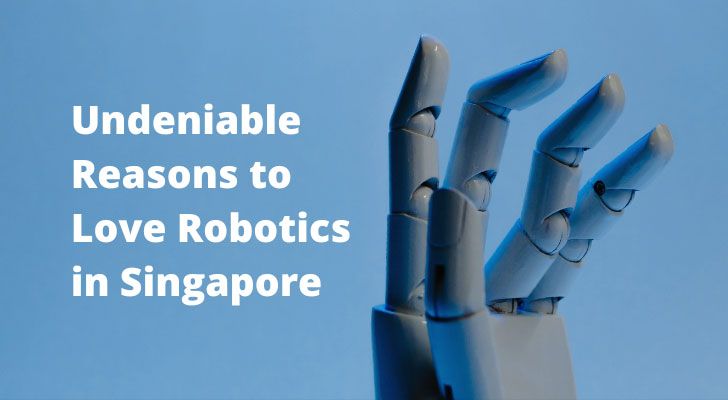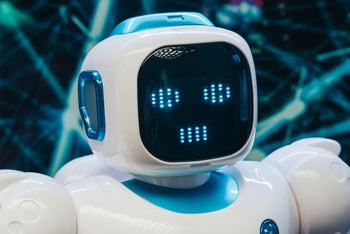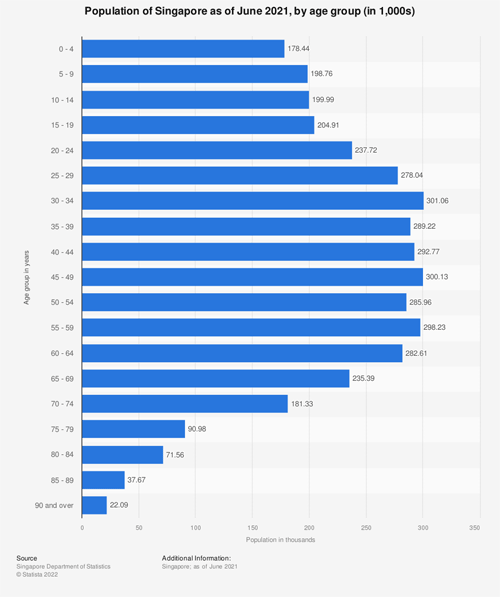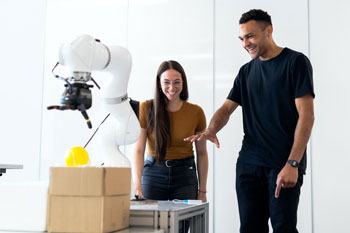It is possible that in this day and age, it will not be as surprising to see a robot walking down the street as it once was. Many nations in the world put money into researching and developing new technologies. One example of this is robotics in Singapore, which is rapidly evolving into a new trend beneficial to the local society.

In many different spheres and industries in Singapore, robotics solutions replace human labour. Robotics solutions encompass not only the application of industrial robots for performing activities of repetitive nature as well as autonomous mobility robots but also software robots for robotic process automation (RPA) and chatbots.
We can anticipate further advancements from this robotics powerhouse given the unrelenting developments that have been made in the interconnected area of data science, computer vision, artificial intelligence, and robotics in the island state of Singapore, which opens the way for AI technology and an innovation centre. In the meantime, I hope this article will help you get more knowledge about robotics and its many facets.
Part of Singapore’s Smart Nation initiative
Several government-led initiatives are part of Singapore's Smart Nation Initiative to make the most of recent computer advances. Automatisation, cutting-edge technology, and groundbreaking study are all part of its plan to advance national interests.
The programme aims to realise the transformation in essential areas like health, transportation, urban solutions, public spaces, finance, and education by utilising digital technology across its three pillars, the Digital Society, the Digital Economy, and the Digital Government. The effort has been so effective that it has earned Singapore's highest honours, and its success shows no signs of slowing down.
Factors contributing to this success include robotics solutions to complete tasks, such as industrial robots in manufacturing plants and autonomous mobility robots.
Additionally, the Singaporean government provides substantial funding for robotics through initiatives like the National Robotics Programme (https://www.nrp.gov.sg), endowed with $450 million in 2016, and the National Research Foundation (https://www.nrf.gov.sg). National robotics conferences and contests are also commonplace.

Singapore's economic and political stability, exceptional global image, and attractive tax system provide ideal soil for the robotics industry in addition to direct governmental measures. One such startup is SESTO Robotics, a Singapore-based robotics firm that has just raised $5.7M from investors. Singapore has institutionalised a push toward technological advances, which has benefited the disciplines of robotics worldwide and domestically.
To become a knowledge-based, inventive, and smart nation, the country has become interested in robots. The Republic has become a centre for artificial intelligence (AI) due to its early technology adoption. Currently, it's only behind South Korea in terms of automation.
Singapore has 605 robot workers for every 10,000 human workers, which is significantly more than the global average of 126, as reported by the International Federation of Robotics (IFR). The number of robots working in Singapore doubled between 2020 and 2021.
Reduced Population and Increased Employment Opportunities
Being at the forefront of robots is a deliberate move by the country to address pressing issues.
Labor Discrepancy
According to Wikipedia, in 2010, foreign workers made up 34.7% of Singapore's workforce, demonstrating the country's growing reliance on foreign workers. Cleaning and autonomous mobility robots excel at the given duties that Singaporeans typically avoid because they are unsafe, dull, or unclean.
Singapore's labour force was particularly vulnerable during the COVID-19 pandemic, as seen by the lengthy delays experienced when employing foreign workers. A lot of enterprises, tiny and medium-sized enterprises, can benefit from implementing robotics solutions and increasing automation.
Ageing Society
In Singapore, the most remarkable age group as of June 2021 is between 30 and 34 years old according to Statista. By 2050, the average age of residents is predicted to be a little under 53 years old.

Population of Singapore as of June 2021, by age group (Statista)
Despite the general trend, many people in the ageing population will remain active participants in the labour force much past the traditional retirement age of 62. There will be consequences for business, healthcare, and social services due to this trend, which has been dubbed a "silver tsunami."
Shortage of Workers
As Singapore's population ages, there won't be enough people of prime working age to replace those who retire. As the country prepares for an ageing workforce, advances in science, technology, and research are likely to focus on areas where human labour could be replaced or alleviated, such as the development of autonomous mobile robots, robotic process automation, and chatbots.
Decreased Births
According to Wikipedia once again, in 2019, the reproduction rate in Singapore was 1.1, much lower than the replacement rate of 2.1. From 1980 on, fertility rates have been falling steadily. This low percentage is mainly attributable to economic factors such as prioritizing making ends meet in an expensive city-state and time constraints for striking a healthy work-life balance such as not having enough spare time to raise children.
Using online matchmaking services and financial incentives for parents, the Singaporean government has successfully increased the country's marriage rate. Despite these efforts and the increased focus on and assistance for families, no noticeable improvement has occurred.
The Promise of Robotics for the Future

Singapore is poised to retain its preeminence as a hub for research in robotics thanks to its well-established Smart Nation Initiative and its stable government and economy. As time goes on, any of the following is possible.
More Effectiveness and Productivity
Higher outputs with more efficiency are expected as robotics continues to find widespread commercial and home uses. By performing more accurately and efficiently than humans on routine, time-consuming tasks, providing services with minimal mistakes and overtime, and liberating human resources for use in areas not yet amenable to robotics. Autonomous mobile robots can boost productivity and encourage better resource utilisation.
Robots' utility will grow due to developments in artificial intelligence (AI), deep technology (DTech), and assistive technologies.
Understanding the Moral Implications of Robotics and Automation
Singapore is an intriguing laboratory of a country committed to maximising scientific and technical advances despite the threat of an ageing population and the requirement for an influx of foreign workers.
Increased Security
Workers' health and safety can be improved by using robots to do more three-dimensional work. They can reduce workers' exposure to hazards and ease their workloads, reducing the likelihood of burnout. Robots have been put to service in various ways in public spaces, from cleaning and disinfecting to enforcing law and order.
To keep pace with their continued progress, as the results of R&D activities enhance robotic capabilities, more of these tasks may eventually be delegated to robots.
Supercharge Your AWeber Account
Take Your Email Marketing To The Next Level With These Powerful Tools
Improved Use of Robotics and Automation in Healthcare
Since surgical robots are already a reality, future improvements will surely follow the same pattern as other areas of AI and deep technology, as well as the expanding health sciences.
Final Thoughts
Singapore is still a leading technological hub, and its prominence in robotics application, research, and industry may soon surpass South Korea's. To better reflect the interests and concerns of its citizens, the Smart Nation Initiative must foster higher education on topics like automation, knowledge-based robots, AI, and big data analytics among its population.
Singapore is on an irreversible trajectory to preeminence in the field of robotics due to its affluence, political stability, and Smart Nation Initiative. This undisputed robotic innovation leader will undoubtedly put this formidable capacity to good use in addressing its many shortcomings and fostering a robust and healthy workforce and nation.
What Do You Advocate?


